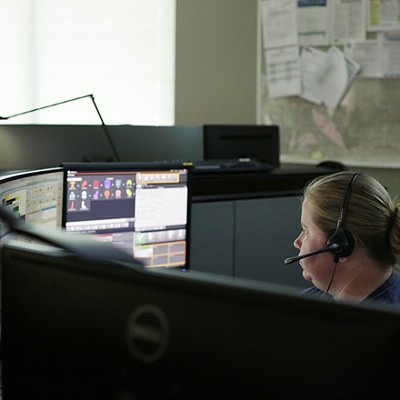Max Track Facts
[
{
"name": "Broadstreet - Instory",
"component": "25846487",
"insertPoint": "4",
"requiredCountToDisplay": "4"
},{
"name": "Broadstreet - Empower Local",
"component": "27852456",
"insertPoint": "8",
"requiredCountToDisplay": "8"
},{
"name": "Broadstreet - Instory",
"component": "25846487",
"insertPoint": "12",
"requiredCountToDisplay": "12"
},{
"name": "Broadstreet - Instory - 728x90 / 970x250",
"component": "27852677",
"insertPoint": "18",
"requiredCountToDisplay": "18"
},{
"name": "Broadstreet - Instory",
"component": "25846487",
"insertPoint": "5th",
"startingPoint": "23",
"requiredCountToDisplay": "24",
"maxInsertions": 100
}
]
by Michael Bowen
February 2006, Turin, Italy. Side by side with Norway's Ole Einar Bjoerndalen, you're pulling with all your might down the homestretch of the Winter Olympics' gold-medal final in cross country skiing. After 49K of a torturous Nordic battle, it's down to just you and Ole. As the crowd goes wild and the NBC cameras zoom in, will you end up with also-ran silver or the sweetness of gold?
Or are you about to be unhinged by your overactive fantasy life?
The reality for cross country newbies is that, first time out on the groomed trails, you're less likely to fall into Olympic glory than you are to fall on your keister. Several times. Because The Inlander wants you to avoid lost time, squandered money and extensive bruising, welcome to X-C Ski 101: tips on how to get into the cross country skiing racket.
We'll have you gliding across pristine wintry landscapes in no time. And it's not just the Currier & amp; Ives views that are the highlights of the cross country experience -- you'll get a good workout, too.
CROSS COUNTRY WORKOUT
That's because -- as anyone who's ever climbed onto a NordicTrack machine knows -- cross country works your arms as well as your legs. "You'll see guys in competition coming down off a hill and double-pulling -- that's a real workout," says John Shea, the cross country expert at REI. But as more and more baby boomers are realizing, you don't have to be in the Olympics to gain the benefits of Nordic skiing.
"As compared to running," says Shea, "you get more of an upper-body workout, and there's no ballistic action -- so it's easier on your joints. We sell a lot of cross country skis to people who have been told by their orthopedists, 'Don't run so much. Go easy on your joints.'"
But if you're trying to save wear and tear on your body, why not go with snowshoeing, which has been booming in popularity the last few years and is easier to learn? "If you can walk, you can snowshoe," says Bryan Conn of Mountain Gear. But even though cross country involves added expense and extra instructional time, it's worth it. As Conn says, "done right, with cross country you can go further and faster. It's the old speed thing."
X-C EQUIPT.
Yet while accomplished skiers can gain a speed advantage through gliding, not all cross country skis are designed to go fast. Joshua Hess of REI explains that "touring skis -- not like the in-line skis for groomed trails -- are wider, with metal edges. And they're worn with a heavier boot so you can really carry your weight into the snow -- like four-wheel drive."
Conn adds that the older, less active and less experienced at cross country you are, the wider and shorter the skis he'd select for you. "Basically, they're more stable and more maneuverable," he says. "They're like the snowshoes of cross country skis."
Basically, you can follow cross country tracks that have already been laid down or you can blaze your own trails. "Metal edges are more characteristic of backcountry skis, though some cross country skis have them," says Shea. "They come into play when the tracks get icy. When you have a 30-degree temperature change in one day, as we do sometimes here in the Northwest, that can be important. Let's say you go out around noon and it's relatively warm -- well, later in the day, even with the waxless skis, people have to understand that here in the Northwest, you can get ice accumulation" on the bottom of your skis, he says.
The mantra about waxless skis, as Hess says, is that "You just wax the tip and tails once a season" -- but grip is always a concern, and not only because of accumulated ice. That's because cross country skis, unlike single-camber downhill skis, have a double camber: They flex down a bit, and then a bit more as you put more weight on them. It's a kind of double spring action -- necessary so you'll have less friction for fast gliding but full surface contact for going up hills. Unless the skis flatten on the snow, you can't climb.
GET THE FIT
You won't be climbing or gliding or being comfortable at all unless your skis and boots -- the entire package -- fits well.
REI's Shea says, "I ask a lot of questions before fitting someone to a cross country ski" -- with intended uses, locations, surfaces, athletic conditioning and more all coming into play.
A very rough estimate of the length of ski you'll need involves standing the ski on edge vertically and reaching up -- your wrist should just curl over it. The general range is 180cm-210cm (roughly six or seven feet).
Poles should come to your shoulder bone or about the armpit level. (Here, as everywhere, there's a cornucopia of choices: Even those cute little snow baskets toward the bottom of the poles vary in style.)
The comfort of one's boots is, of course, a matter of personal preference, though the amount of ankle support, the boots' weight, stability and insulation are all considerations. When asked about the reasons people give for bailing out on cross country, Mountain Gear's Conn has a quick response: "Their feet get cold."
TAKE ME WHERE THE ACTION IS
As with any sport that involves a high level of coordination and the potential for beginners of both severe humiliation and bodily harm, the experts aren't too worried: Piece of cake, they say.
"If you go out for your first time with somebody who's skied cross country before, it'll take you 20 minutes to figure out the basics," says Shea. "And gradually you'll get more efficient."
Conn specifies the kind of balancing required: "You need to get into a proper stance," he says, "and people need to learn to put their weight on the ball of the foot -- not on their heels, like [downhill] skiers. The center of the grip zone needs to be under the ball of the foot."
Despite all the legwork involved, clearly cross country involves working the upper body more than activities like running. Do beginners, as a result, tend to overuse or underuse their arms?
"Overuse," says Conn. "They use their arms to save themselves from falling," he laughs.
"If snowshoes just make you take a wider stance," he continues, "with cross country, you've got to learn to glide. Once you get more balance, you're using the glide value of the skis. Most people shuffle instead of gliding -- they just shuffle and use their poles too much," says Conn.
So if snowshoeing is about a two and downhill is a nine in terms of a 10-point scale of difficulty, where does cross country rate? "About a four," says Shea.
Easy for him to say. "You can always just walk in them -- take baby steps," he assures me.
But babies fall down and hurt themselves -- sometimes often. And the world of cross country begins to sound more ominous once you start to question these guys about the typical mistakes that beginners make.
At first, Shea is reassuring: " It's just a matter of getting your coordination together," he says, soothingly.
And for those of us who don't have any coordination to get together? "Well, these boots don't release -- so some people have a hard time getting back up after they fall," he replies. Swell advice.
Shea knows how to avoid one common pitfall: "If you fall down," he says, "don't sit facing downhill as you try to get up -- you'll just slide downhill and never get to your feet. Be sure to get traversed sideways on the hill."
Of course, it's just possible that, even after reading this article with all its assurances about how to stay upright and remain comfortable, you still might have a reasonable expectation of falling down and feeling frazzled. REI has just the remedy for you: cross country ski lessons for $27 ($20 if you already have your own equipment), with classroom sessions on Wednesdays (Dec. 1 or Dec. 15) at 6:30 pm and then a two-hour on-the-snow class up on Mount Spokane at various times on the following weekend.
WHERE TO GO
Mount Spokane is a cross country paradise with about the closest proximity any city could hope for -- but what if you're the type who wants just to step out the front door and go?
Asked about potential cross country ski areas even closer than Mount Spokane, Conn points to Manito Park and Downriver Golf Course as great in-town cross country venues. In addition, he says, "Mike Aho at Spokane Parks told me that they're going to start setting tracks on the Centennial Trail -- it's asphalt, so you only need a few inches [of snow]."
Shea has suggestions, too: "Here in town," he says, "Downriver Golf Course will track it, and Riverside State Park has some groomed trails, I believe. They'll use a snowmobile with a sled behind it that cuts grooves that are parallel -- about 3 inches deep or so. Up on Mount Spokane, they use a special grooming machine."
As with most sports, technology improves not only the equipment but even the playing field itself. Conn makes the point that improved technology in cross country equipment results not just in better stability but in greater comfort. "It's very important to keep your feet warm," he says, adding that one of the main reasons people stop cross country skiing after being exposed to it is that "they just don't like being out in the snow, or 'It's too cold out there,' they'll say."
But for Conn -- who enjoys both snowshoeing and cross country -- the appeal of the gliding sport is obvious: "People just go out on the trails to have a good time. I see people out there -- all different levels, some of them just wearing heavy coats and jeans - and they're all having a great time."
Even if they get distracted by thoughts of winning Olympic gold.
THE ENTIRE PACKAGE
Whether you rent or buy, there are four components you'll need to glide over hill and dale in those nifty preset tracks: cross country skis, bindings, boots and poles (all prices based on our visit to REI).
- Cross country skis for use on groomed trails (or at least in tire tracks on streets) run about $65-$200. Most models have a wooden core wrapped in Fiberglas. Because they come in a variety of makes and models -- the Lillehammer by Madshus, the EVO AR Tour by Rossignol, Fischer's Nordic Cruising and many more -- you'll need some help with an expert fitting.
- Bindings run $40-$60. There are two binding systems; both involve attaching the boot to the ski with a metal bar at the toe, allowing the entire foot to swing back.
- The boots range from $48 for youth models up to $105 for adult sizes. At the higher end, you get more durable ankle support, better insulation and a snow cover over the laces.
- You'll also need a couple of poles to pull yourself along. These run from $15 for a pair of youth poles up to $49 for the best adult models. Used to push yourself up slight inclines, cross country poles are much longer than their downhill counterparts. Most poles are a mixture of aluminum and Fiberglas; the more expensive models are lighter and have nicer grips. The wrist straps aren't simply (as with surfboards) to make sure that your equipment doesn't fly away; in cross country, you can use the straps to gain a little leverage on the pole: As REI's John Shea says, "You don't have to white-knuckle it."
- As for what to wear, the advice is similar to that given to runners: Put on layers of clothing, try to feel cool at the start and trust in how you'll warm up. Next to the skin, avoid wearing cotton, instead choosing a two-ply polypropylene garment that wicks the sweat away and transports it to an outer layer, where evaporation can take over.
The itemized X-C package Shea thought (in a preliminary way) might be good for me -- $120 skis, $90 boots, $40 bindings, $40 poles -- amounts to less than $300, though REI -- like most ski shops -- offers a 10 percent discount when you buy a package with all the components.
But even those in the business of selling cross country equipment advise newcomers to rent before you buy. Try it out first, because push-with-your-right-foot, pull-with-your-left-arm gliding motion isn't intuitive, at least at first.
Publication date: 11/11/04
February 2006, Turin, Italy. Side by side with Norway's Ole Einar Bjoerndalen, you're pulling with all your might down the homestretch of the Winter Olympics' gold-medal final in cross country skiing. After 49K of a torturous Nordic battle, it's down to just you and Ole. As the crowd goes wild and the NBC cameras zoom in, will you end up with also-ran silver or the sweetness of gold?
Or are you about to be unhinged by your overactive fantasy life?
The reality for cross country newbies is that, first time out on the groomed trails, you're less likely to fall into Olympic glory than you are to fall on your keister. Several times. Because The Inlander wants you to avoid lost time, squandered money and extensive bruising, welcome to X-C Ski 101: tips on how to get into the cross country skiing racket.
We'll have you gliding across pristine wintry landscapes in no time. And it's not just the Currier & amp; Ives views that are the highlights of the cross country experience -- you'll get a good workout, too.
CROSS COUNTRY WORKOUT
That's because -- as anyone who's ever climbed onto a NordicTrack machine knows -- cross country works your arms as well as your legs. "You'll see guys in competition coming down off a hill and double-pulling -- that's a real workout," says John Shea, the cross country expert at REI. But as more and more baby boomers are realizing, you don't have to be in the Olympics to gain the benefits of Nordic skiing.
"As compared to running," says Shea, "you get more of an upper-body workout, and there's no ballistic action -- so it's easier on your joints. We sell a lot of cross country skis to people who have been told by their orthopedists, 'Don't run so much. Go easy on your joints.'"
But if you're trying to save wear and tear on your body, why not go with snowshoeing, which has been booming in popularity the last few years and is easier to learn? "If you can walk, you can snowshoe," says Bryan Conn of Mountain Gear. But even though cross country involves added expense and extra instructional time, it's worth it. As Conn says, "done right, with cross country you can go further and faster. It's the old speed thing."
X-C EQUIPT.
Yet while accomplished skiers can gain a speed advantage through gliding, not all cross country skis are designed to go fast. Joshua Hess of REI explains that "touring skis -- not like the in-line skis for groomed trails -- are wider, with metal edges. And they're worn with a heavier boot so you can really carry your weight into the snow -- like four-wheel drive."
Conn adds that the older, less active and less experienced at cross country you are, the wider and shorter the skis he'd select for you. "Basically, they're more stable and more maneuverable," he says. "They're like the snowshoes of cross country skis."
Basically, you can follow cross country tracks that have already been laid down or you can blaze your own trails. "Metal edges are more characteristic of backcountry skis, though some cross country skis have them," says Shea. "They come into play when the tracks get icy. When you have a 30-degree temperature change in one day, as we do sometimes here in the Northwest, that can be important. Let's say you go out around noon and it's relatively warm -- well, later in the day, even with the waxless skis, people have to understand that here in the Northwest, you can get ice accumulation" on the bottom of your skis, he says.
The mantra about waxless skis, as Hess says, is that "You just wax the tip and tails once a season" -- but grip is always a concern, and not only because of accumulated ice. That's because cross country skis, unlike single-camber downhill skis, have a double camber: They flex down a bit, and then a bit more as you put more weight on them. It's a kind of double spring action -- necessary so you'll have less friction for fast gliding but full surface contact for going up hills. Unless the skis flatten on the snow, you can't climb.
GET THE FIT
You won't be climbing or gliding or being comfortable at all unless your skis and boots -- the entire package -- fits well.
REI's Shea says, "I ask a lot of questions before fitting someone to a cross country ski" -- with intended uses, locations, surfaces, athletic conditioning and more all coming into play.
A very rough estimate of the length of ski you'll need involves standing the ski on edge vertically and reaching up -- your wrist should just curl over it. The general range is 180cm-210cm (roughly six or seven feet).
Poles should come to your shoulder bone or about the armpit level. (Here, as everywhere, there's a cornucopia of choices: Even those cute little snow baskets toward the bottom of the poles vary in style.)
The comfort of one's boots is, of course, a matter of personal preference, though the amount of ankle support, the boots' weight, stability and insulation are all considerations. When asked about the reasons people give for bailing out on cross country, Mountain Gear's Conn has a quick response: "Their feet get cold."
TAKE ME WHERE THE ACTION IS
As with any sport that involves a high level of coordination and the potential for beginners of both severe humiliation and bodily harm, the experts aren't too worried: Piece of cake, they say.
"If you go out for your first time with somebody who's skied cross country before, it'll take you 20 minutes to figure out the basics," says Shea. "And gradually you'll get more efficient."
Conn specifies the kind of balancing required: "You need to get into a proper stance," he says, "and people need to learn to put their weight on the ball of the foot -- not on their heels, like [downhill] skiers. The center of the grip zone needs to be under the ball of the foot."
Despite all the legwork involved, clearly cross country involves working the upper body more than activities like running. Do beginners, as a result, tend to overuse or underuse their arms?
"Overuse," says Conn. "They use their arms to save themselves from falling," he laughs.
"If snowshoes just make you take a wider stance," he continues, "with cross country, you've got to learn to glide. Once you get more balance, you're using the glide value of the skis. Most people shuffle instead of gliding -- they just shuffle and use their poles too much," says Conn.
So if snowshoeing is about a two and downhill is a nine in terms of a 10-point scale of difficulty, where does cross country rate? "About a four," says Shea.
Easy for him to say. "You can always just walk in them -- take baby steps," he assures me.
But babies fall down and hurt themselves -- sometimes often. And the world of cross country begins to sound more ominous once you start to question these guys about the typical mistakes that beginners make.
At first, Shea is reassuring: " It's just a matter of getting your coordination together," he says, soothingly.
And for those of us who don't have any coordination to get together? "Well, these boots don't release -- so some people have a hard time getting back up after they fall," he replies. Swell advice.
Shea knows how to avoid one common pitfall: "If you fall down," he says, "don't sit facing downhill as you try to get up -- you'll just slide downhill and never get to your feet. Be sure to get traversed sideways on the hill."
Of course, it's just possible that, even after reading this article with all its assurances about how to stay upright and remain comfortable, you still might have a reasonable expectation of falling down and feeling frazzled. REI has just the remedy for you: cross country ski lessons for $27 ($20 if you already have your own equipment), with classroom sessions on Wednesdays (Dec. 1 or Dec. 15) at 6:30 pm and then a two-hour on-the-snow class up on Mount Spokane at various times on the following weekend.
WHERE TO GO
Mount Spokane is a cross country paradise with about the closest proximity any city could hope for -- but what if you're the type who wants just to step out the front door and go?
Asked about potential cross country ski areas even closer than Mount Spokane, Conn points to Manito Park and Downriver Golf Course as great in-town cross country venues. In addition, he says, "Mike Aho at Spokane Parks told me that they're going to start setting tracks on the Centennial Trail -- it's asphalt, so you only need a few inches [of snow]."
Shea has suggestions, too: "Here in town," he says, "Downriver Golf Course will track it, and Riverside State Park has some groomed trails, I believe. They'll use a snowmobile with a sled behind it that cuts grooves that are parallel -- about 3 inches deep or so. Up on Mount Spokane, they use a special grooming machine."
As with most sports, technology improves not only the equipment but even the playing field itself. Conn makes the point that improved technology in cross country equipment results not just in better stability but in greater comfort. "It's very important to keep your feet warm," he says, adding that one of the main reasons people stop cross country skiing after being exposed to it is that "they just don't like being out in the snow, or 'It's too cold out there,' they'll say."
But for Conn -- who enjoys both snowshoeing and cross country -- the appeal of the gliding sport is obvious: "People just go out on the trails to have a good time. I see people out there -- all different levels, some of them just wearing heavy coats and jeans - and they're all having a great time."
Even if they get distracted by thoughts of winning Olympic gold.
THE ENTIRE PACKAGE
Whether you rent or buy, there are four components you'll need to glide over hill and dale in those nifty preset tracks: cross country skis, bindings, boots and poles (all prices based on our visit to REI).
- Cross country skis for use on groomed trails (or at least in tire tracks on streets) run about $65-$200. Most models have a wooden core wrapped in Fiberglas. Because they come in a variety of makes and models -- the Lillehammer by Madshus, the EVO AR Tour by Rossignol, Fischer's Nordic Cruising and many more -- you'll need some help with an expert fitting.
- Bindings run $40-$60. There are two binding systems; both involve attaching the boot to the ski with a metal bar at the toe, allowing the entire foot to swing back.
- The boots range from $48 for youth models up to $105 for adult sizes. At the higher end, you get more durable ankle support, better insulation and a snow cover over the laces.
- You'll also need a couple of poles to pull yourself along. These run from $15 for a pair of youth poles up to $49 for the best adult models. Used to push yourself up slight inclines, cross country poles are much longer than their downhill counterparts. Most poles are a mixture of aluminum and Fiberglas; the more expensive models are lighter and have nicer grips. The wrist straps aren't simply (as with surfboards) to make sure that your equipment doesn't fly away; in cross country, you can use the straps to gain a little leverage on the pole: As REI's John Shea says, "You don't have to white-knuckle it."
- As for what to wear, the advice is similar to that given to runners: Put on layers of clothing, try to feel cool at the start and trust in how you'll warm up. Next to the skin, avoid wearing cotton, instead choosing a two-ply polypropylene garment that wicks the sweat away and transports it to an outer layer, where evaporation can take over.
The itemized X-C package Shea thought (in a preliminary way) might be good for me -- $120 skis, $90 boots, $40 bindings, $40 poles -- amounts to less than $300, though REI -- like most ski shops -- offers a 10 percent discount when you buy a package with all the components.
But even those in the business of selling cross country equipment advise newcomers to rent before you buy. Try it out first, because push-with-your-right-foot, pull-with-your-left-arm gliding motion isn't intuitive, at least at first.
Publication date: 11/11/04
















